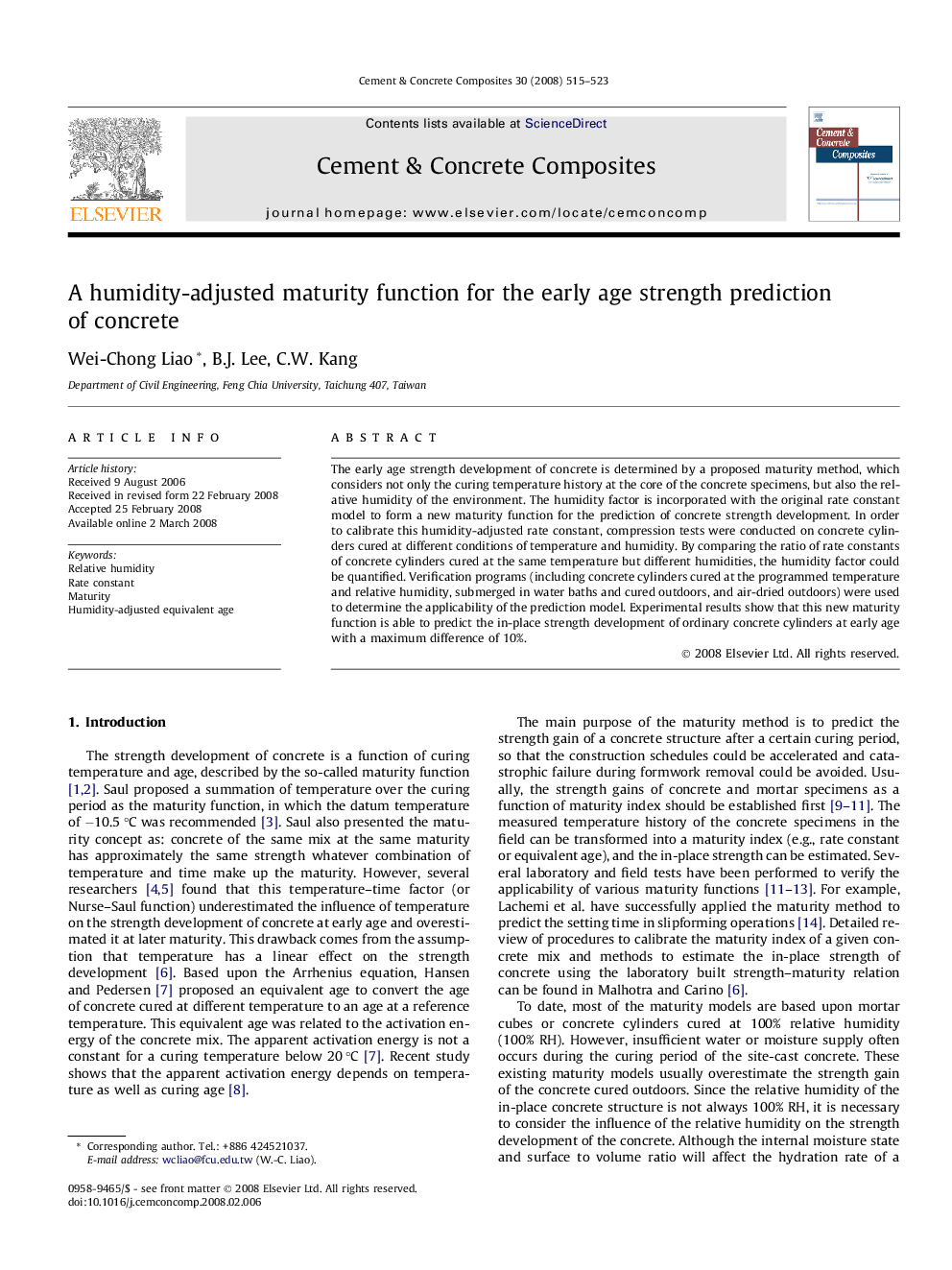| Article ID | Journal | Published Year | Pages | File Type |
|---|---|---|---|---|
| 1455632 | Cement and Concrete Composites | 2008 | 9 Pages |
The early age strength development of concrete is determined by a proposed maturity method, which considers not only the curing temperature history at the core of the concrete specimens, but also the relative humidity of the environment. The humidity factor is incorporated with the original rate constant model to form a new maturity function for the prediction of concrete strength development. In order to calibrate this humidity-adjusted rate constant, compression tests were conducted on concrete cylinders cured at different conditions of temperature and humidity. By comparing the ratio of rate constants of concrete cylinders cured at the same temperature but different humidities, the humidity factor could be quantified. Verification programs (including concrete cylinders cured at the programmed temperature and relative humidity, submerged in water baths and cured outdoors, and air-dried outdoors) were used to determine the applicability of the prediction model. Experimental results show that this new maturity function is able to predict the in-place strength development of ordinary concrete cylinders at early age with a maximum difference of 10%.
